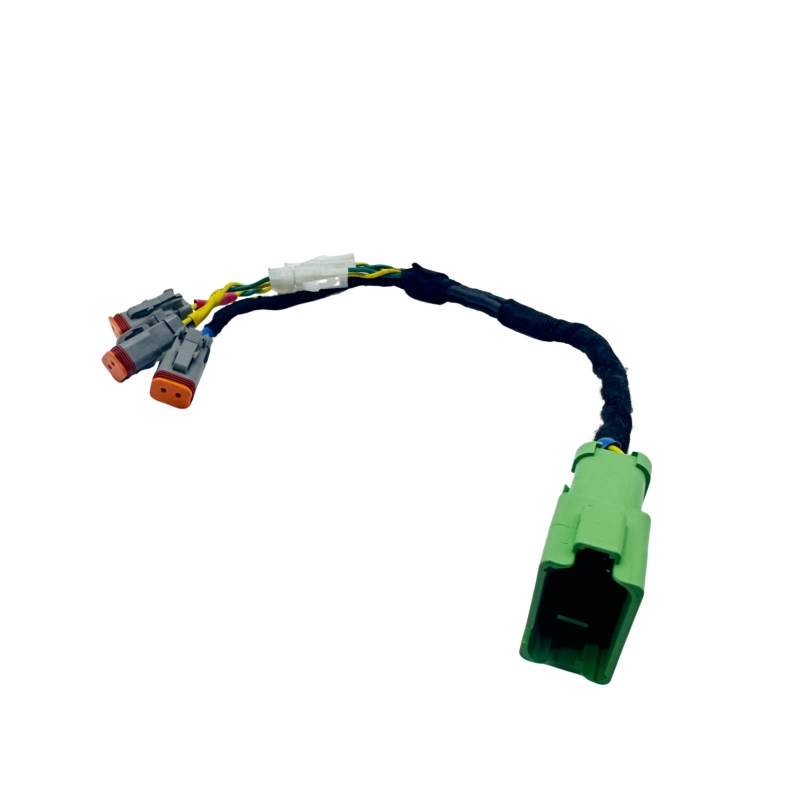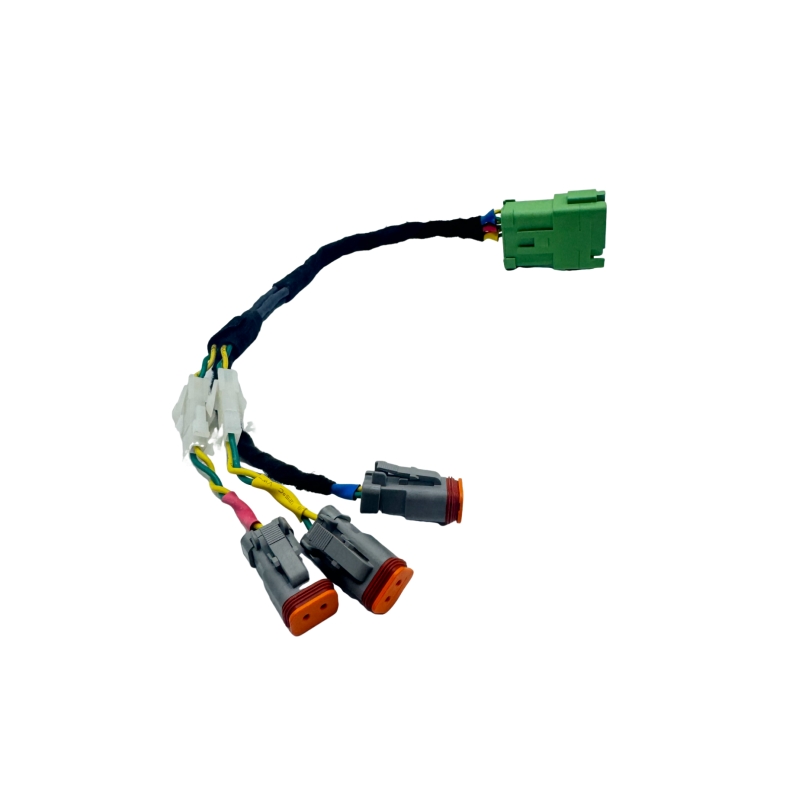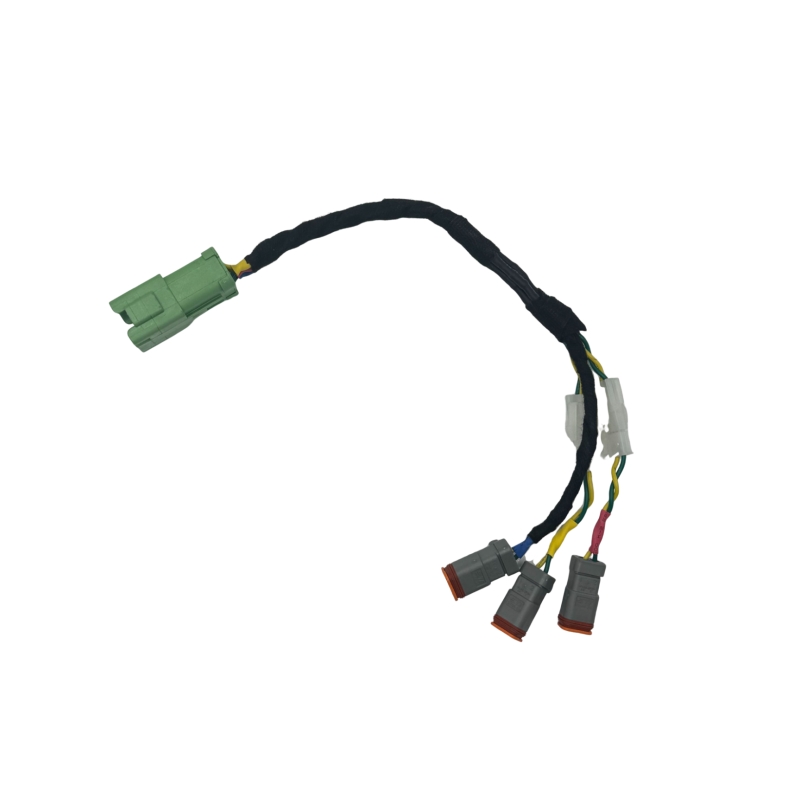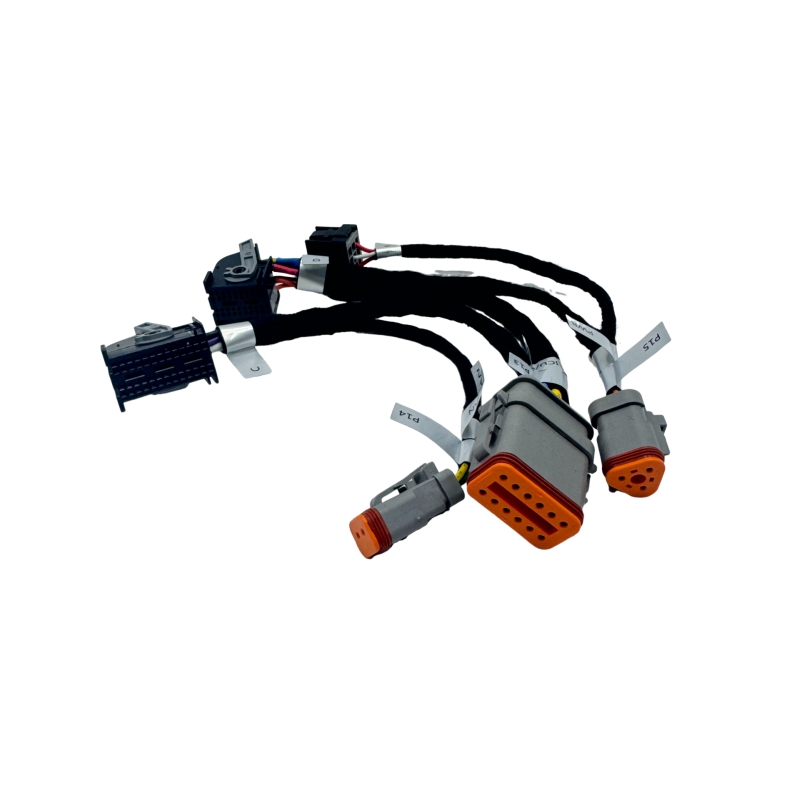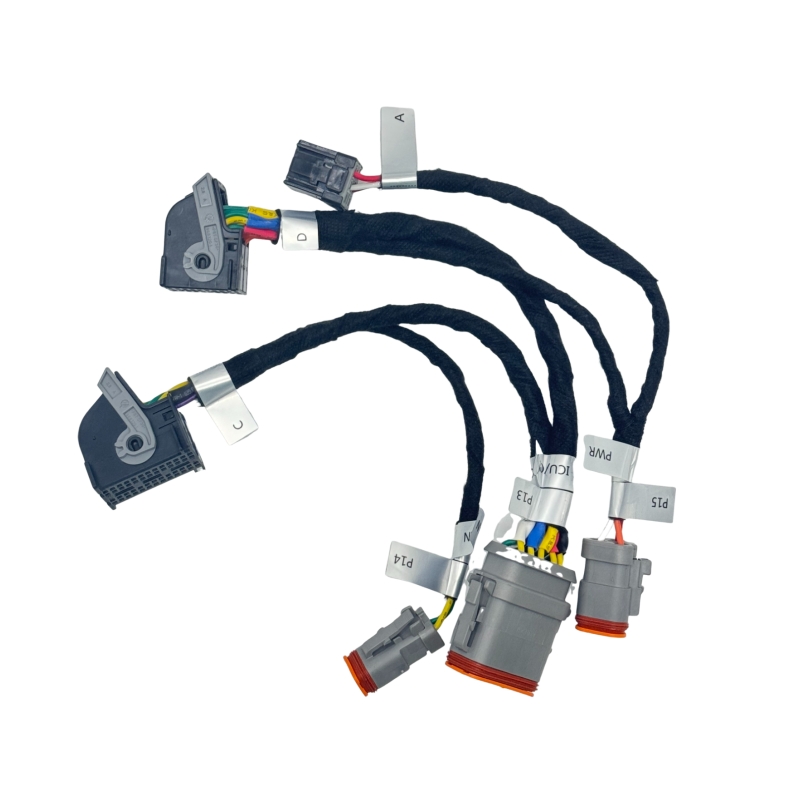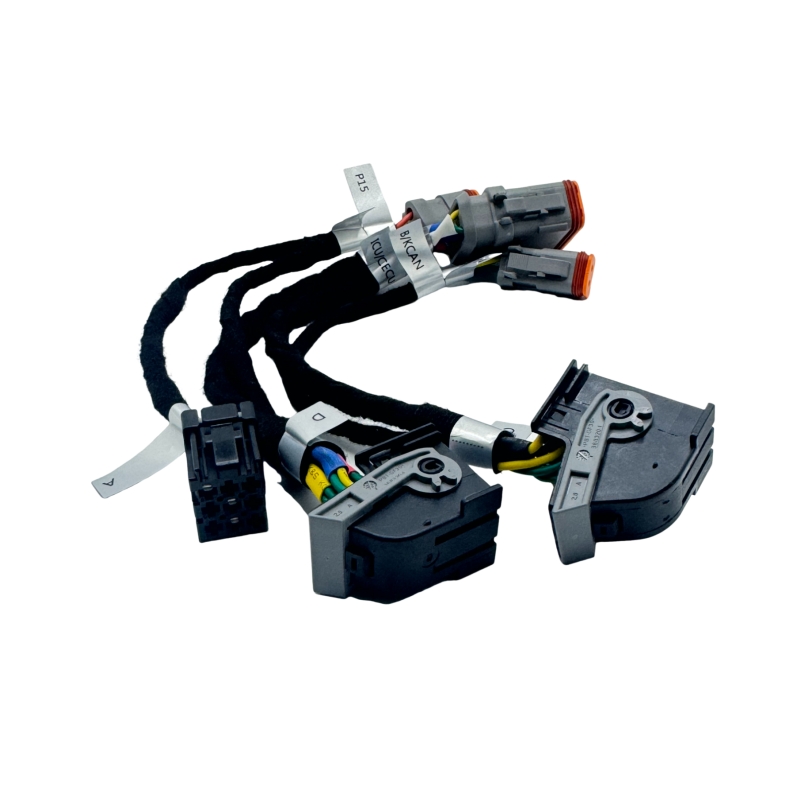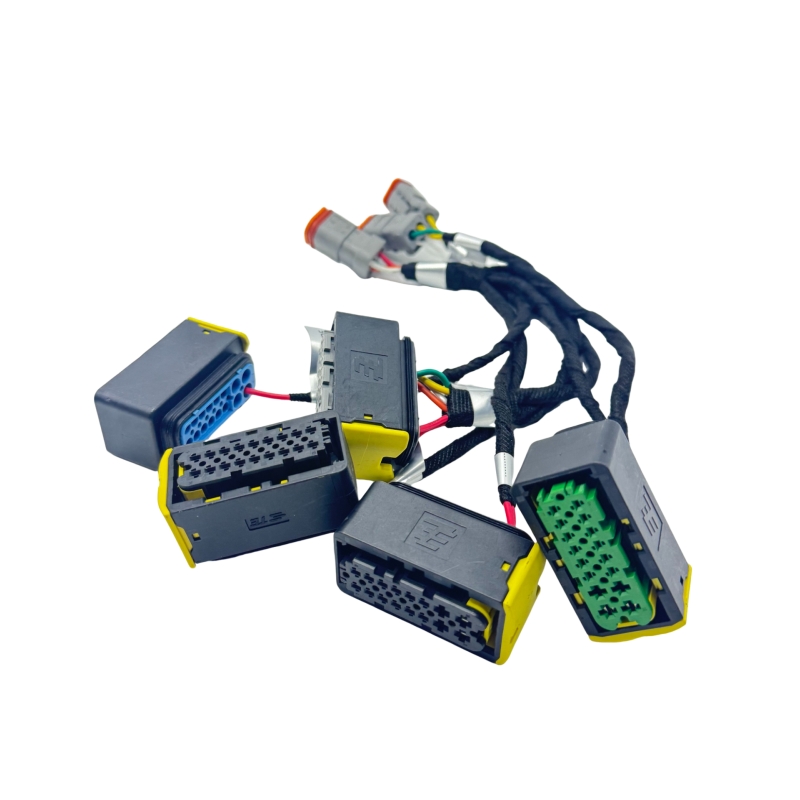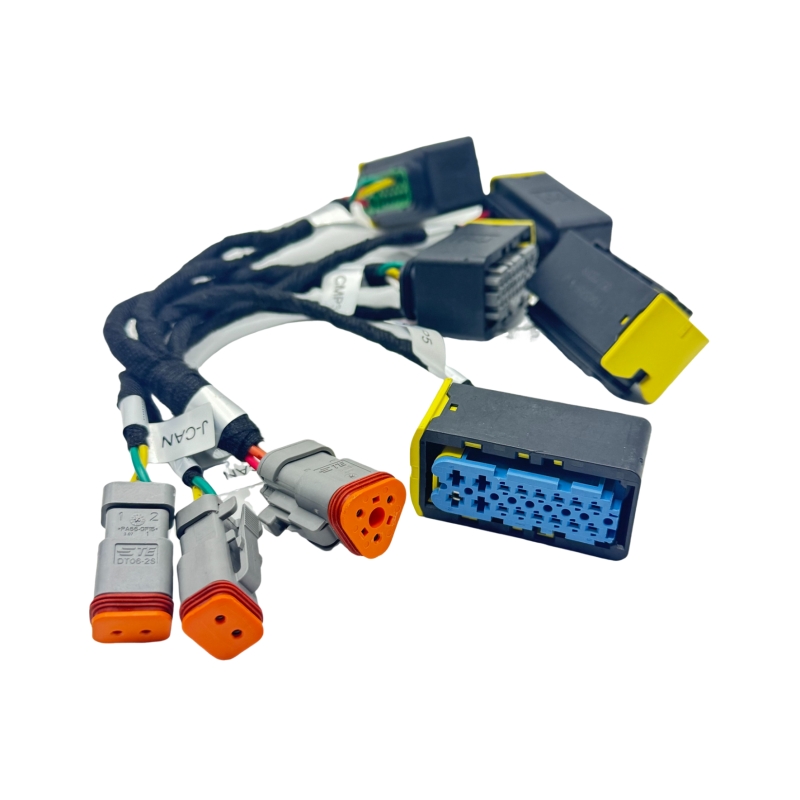Bus Cabin Wiring Harness
The bus cabin power harness is an electrical connection component designed specifically for the bus cabin. It is mainly responsible for providing power to various electronic devices in the cabin (such as air conditioning, lighting, entertainment system, navigator, etc.).
1. Product Features
High reliability:
Using high-quality conductors and insulation materials to ensure the stability of power transmission during long-term use.
High temperature and corrosion resistance:
The wiring harness design can withstand the high temperature and humid environment in the car, ensuring stable operation under various climatic conditions.
Flexibility:
The wiring harness design is flexible, easy to install and wire, and adapts to the complex spatial structure in the bus.
Multiple specifications:
A variety of wire diameters and connector types are provided to meet the power and connection requirements of different devices.
Safety:
With safety functions such as overload protection and short circuit protection, it reduces the risk of electrical failure and ensures passenger safety.
2. Technical parameters
Rated voltage: usually 12V or 24V, depending on the design of the bus's electrical system.
Rated current: generally between 10A and 100A, designed according to the needs of different equipment.
Operating temperature range: -40°C to +85°C, adapting to various environmental conditions of the bus.
Protection level: usually IP67 or higher, ensuring reliability in humid environments.
3. Application scenarios
Cockpit lighting system:
Provide power for LED lights, ambient lights, etc. in the cabin to ensure good lighting effects.
Air conditioning system:
Connect the air conditioning compressor and control unit to provide comfortable temperature regulation in the cabin.
Entertainment system:
Power entertainment devices such as car audio, TV, DVD player, etc. to enhance passengers' travel experience.
Navigation and information system:
Connect the navigator, information display screen and other electronic devices to ensure the transmission and display of real-time information.
USB charging port:
Provide multiple USB ports to charge passengers' mobile phones, tablets and other devices.
4. Installation and maintenance
Correct wiring:
During installation, ensure that the wiring harness is reasonably routed, avoid sharp turns and tension, and prevent cable damage.
Regular inspection:
Check the power harness regularly to ensure that there is no aging, wear or breakage to maintain the normal operation of the system.
Waterproof measures:
For exposed connectors and harnesses, ensure good waterproof protection to prevent moisture from entering and causing short circuits.
Summary
The bus cabin power harness is the core component of the bus's internal electrical system, responsible for providing power to various electronic devices. Its design takes into account reliability, safety and adaptability, ensuring stable operation in a complex and dynamic in-vehicle environment and improving passengers' travel experience.

